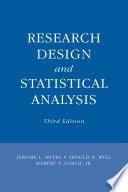
Family Law in Nigeria.
Third Edition
This is the third edition of an established and leading book on family law in Nigeria. Since the last edition in 1990 significant judicial and statutory enactments have taken place in the area of study. The new edition incorporates these changes and explains their implications. The chapters have been comprehensively re-written to reflect the changes in the law and to update all relevant information including the Same Sex Bill and the Nigerian Law Reform Commissions draft Marriage Act. New chapters have been included on domestic violence and widowhood respectively to reflect the continuing developments in Nigerian family law. The new Child's Right Act of 2003 and the similar state legislations have been analysed in the three new chapters. The non-customary law rules in the intestate succession have been extensively recast to reflect the provisions of the Marriage act as contained in the Lawa of the Federation of Nigeria 2004. This edition has devoted considerable attention to the applicable customary laws on the family and provides extensive treatment of Islamic Law Rules and their interpretations and application by the superior court. Familu law in Nigeria presents a fresh view not only on the applicable rules on Nigerian family law but also suggest new directions and underlines the socio-economic implications.
- ISBN 13 : 9780814256
- ISBN 10 : 9789780814250
- Judul : Family Law in Nigeria.
- Sub Judul : Third Edition
- Pengarang : Nwogugu, E.I.,
- Kategori : Law
- Penerbit : HEBN Publishers
- Bahasa : en
- Tahun : 2014
- Halaman : 512
- Google Book : http://books.google.co.id/books?id=VpmyAwAAQBAJ&dq=intitle:FAMILY+ISLAMIC+LAW&hl=&source=gbs_api
-
Ketersediaan :
... Islamic personal law applied in Nigeria in respect of subjects as marriage , succession and gifts . Moreover , the Penal Code of 1959 applicable to the then Northern Region ( northern states ) recognized some offences sourced from ...









